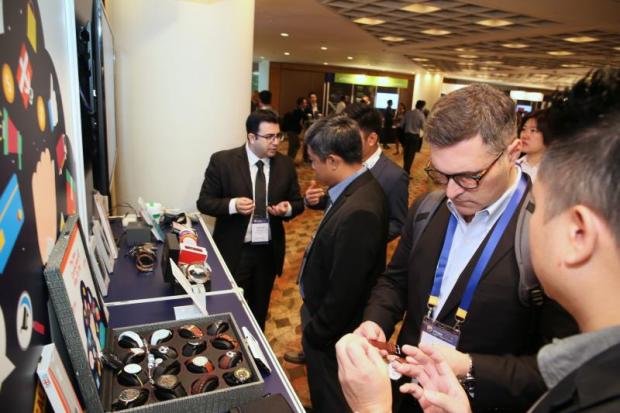
The rise of new forms of Internet of Things (IoT) and artificial intelligence (AI), empowered by big data analytics, will lead to new methods of payment, with Visa Inc predicting 30 billion ways to pay and 400 million ways to be paid by 2022.
"The greater number of merchant locations, the greater number of ways there are to pay, opening huge opportunities for digital payments," Chris Clark, regional president of Visa Asia-Pacific, recently said at the Visa Security Summit in Singapore.
Visa is partnering with third parties to ensure payment is accessible to its 3 billion cardholders and 46 million merchants worldwide.
Apart from financial institutions, the company has also collaborated with fintech firms and local startups by opening the Application Programming Interface (API) to them, providing for payment service innovation and shortening the development life cycle.
The company, meanwhile, is exploring opportunities to collaborate with internet players from around the world that are expanding into financial services and digital commerce, including Google, Apple, Facebook, Amazon, Alibaba, Tencent, Xiaomi and more.
Visa is also expanding its security technologies beyond plastic cards to in-store contactless payment and in-app payment, along with mobile, electronic commerce and push payment.
"The explosion of digital payments is creating new security vulnerabilities as personal data is exposed," said Ellen Richey, vice-chairman and chief of risk at Visa.
In 2018, Visa estimates there will be 3.2 billion cards with payment volume reaching 7.6 trillion transactions compared with 28 million cards registering 8 billion transactions in payments in 1973.
Ms Richey said cybercriminals are better organised and funded. Fraudsters are also moving upstream, from merchants to processors and financial institutions.
To minimise and eliminate risks, she said the company has adopted new data security technologies like tokenisation, which is a process to safeguard sensitive data by replacing a sensitive data element with a non-sensitive equivalent, called a token.
"Tokenisation will expand beyond plastic cards to wearable devices and others and it will discourage data compromise," Ms Richey said.
3D Secure technology makes digital commerce more secure and convenient for shoppers, as it provides authentication for data connections between digital merchants, payment networks and financial institutions through the use of data analytics.
Ms Richey said 3D Secure was originally used for browser-based e-commerce but has evolved for mobile, digital wallets, apps and connected devices.
The 2.0 version enables a real-time, secure, information-sharing pipeline that merchants can use to send an unprecedented number of transactions that the issuer can employ to authenticate customers more accurately without asking for a static password or slowing down commerce, Ms Richey said.
She said authentication will move from PIN codes and password signatures to more unique dynamic and contextual data elements, particularly biometrics like facial and fingerprint recognition and device ID geo-location.
In addition, Visa will empower consumers to report cybersecurity threats.
$6.1-trillion opportunity
Mr Clark said urbanisation and increasing mobile usage are driving the appetite for digital payments across Asia-Pacific. Half of the region's population lives in towns and cities, and more than 1.3 billion of the 1.9 billion internet users in Asia-Pacific access the internet via their smartphones.
Asia-Pacific is a US$11-trillion market in terms of payment volume. Currently, more than 55% of all transactions is still cash and cheques. In Southeast Asia, total payment volume payment is $1.3 trillion, of which 76% is cash & cheques. The $6.1 trillion in cash transactions in Asia-Pacific and $1 trillion in Southeast Asia are opportunities to be converted to digital payment.
In Thailand, about 75% of all transactions are still cash-based. But the increased adoption of mobile and contactless payments technology, as well as Thailand's digital payment initiatives, drove digital payments here to grow by 4-5 times during 2007-17.
"We have reached a point where security is embedded in the process," said Joe Cunningham, head of risk for Visa Asia-Pacific. "It doesn't come at the cost of convenience, but it enables innovation."
Mr Cunningham said Visa is ensuring that its network operates at the highest level of security and it continues to steer the industry towards the adoption of strong technologies based on industry standards such as EMV chips, tokenisation and point-to-point encryption.
The company is also embracing more AI and machine learning to increase security to determine patterns and behaviour of cybersecurity risks.
"Combining all security technologies, including AI, Visa has 10 basic points of fraud, which means every $100 that passes through VisaNet, only 10 cents is lost to fraud," Mr Cunningham said.